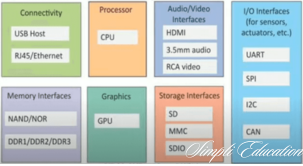Physical and Logical Design of IoT
Introduction
The Internet of Things (IoT) consists of interconnected devices that collect and share data. Designing an IoT system requires understanding two key aspects: physical design (hardware components) and logical design (software, network, and data processing). In this blog, we will explore both in detail to understand how an IoT system is structured.
Physical Design of IoT
The physical design of IoT refers to the tangible components that make up an IoT system. These include:
1. IoT Devices and Sensors
These are the core components that collect and transmit data. Examples include:
- Temperature sensors
- Motion detectors
- GPS trackers
- Smart cameras
2. IoT Gateways
These act as intermediaries between IoT devices and cloud servers, ensuring smooth data transmission. They help in:
- Data filtering and preprocessing
- Enhancing security by encrypting data
- Reducing latency through edge computing
3. Communication Networks
IoT devices need robust networks for data transmission. Common IoT communication technologies include:
- Wi-Fi, Bluetooth, and Zigbee (short-range communication)
- Cellular networks (4G, 5G)
- LPWAN (LoRa, NB-IoT) for long-range low-power communication
4. Cloud Infrastructure
Cloud platforms store, process, and analyze data collected by IoT devices. Cloud computing enables:
- Real-time monitoring and analytics
- Scalable storage solutions
- AI-powered decision-making
Logical Design of IoT
The logical design of IoT refers to the structure, processes, and data management within an IoT system. It defines how different software and network components interact.
1. IoT Architecture
An IoT system follows a multi-layer architecture:
- Perception Layer: Includes sensors and actuators that collect data.
- Network Layer: Transmits data via wired or wireless networks.
- Edge Computing Layer: Processes data near the source to reduce latency.
- Cloud Layer: Stores and analyzes data for decision-making.
- Application Layer: Provides a user interface for monitoring and control.
2. IoT Communication Models
IoT systems use different communication models based on the requirements:
- Device-to-Device (D2D): Direct communication between two IoT devices.
- Device-to-Cloud (D2C): Devices send data to cloud platforms for processing.
- Device-to-Gateway (D2G): Data is routed through an intermediary before reaching the cloud.
- Back-End Data Sharing: Processed data is shared with multiple applications.
3. IoT Data Processing
Data collected from IoT devices undergoes processing to extract insights. This involves:
- Data filtering and aggregation to remove redundant information.
- Real-time analytics for immediate response actions.
- Machine learning integration for predictive analysis.
4. IoT Security and Privacy
To protect IoT systems from cyber threats, security measures include:
- Data encryption and authentication protocols.
- Regular firmware updates to fix vulnerabilities.
- Multi-layered security frameworks to prevent attacks.
A successful IoT design requires a combination of physical components like devices, gateways, and networks, along with logical design elements like architecture, communication models, and data processing. Understanding both aspects ensures the efficient deployment of IoT systems across industries.



